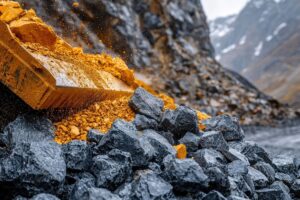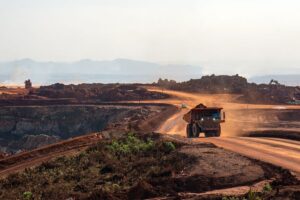4 ASX stocks with high capex bills you should avoid
![]() Nick Sundich, October 3, 2023
Nick Sundich, October 3, 2023
Sometimes stocks with high capex are worth avoiding. Too much capex might require constant capital injections and shareholder dilution. Some industries face high capex by the very nature of the industry they are in. Some temporarily require high capex because of expansion ambitions or because of years of underinvestment.
In this article, we recap 4 ASX stocks with high capex bills awaiting them.
SIGN UP FOR THE STOCKS DOWN UNDER NEWSLETTER NOW!
4 ASX stocks with high capex bills
1. Qantas (ASX:QAN)
The chickens have come home to roost with Qantas. Despite air travel demand remaining high and the company reporting a record profit, it suffered significant reputational damage due to its actions during and after the pandemic (such as outsourcing baggage handlers, blaming customers for long security lines and cuts to its inflight product). The company is finally renewing its fleet and it will not come cheap.
UBS estimated the bill at A$12bn. And that is well before the recent 787 and A350 order was announced. We’ve taken a stab at it, estimating the final bill will come to A$25.7bn, accounting for the most recent orders as well as those it will have to make to replace the 737 fleet. This is more than the company’s total annual revenue even during FY23.
2. Cleanaway (ASX:CWY)
Since Bingo was acquired, this company is the only waste management firm listed on the ASX. The company had a decent six years or so under the tenure of Mark Schubert, but is facing a big capex bill already to fund its future ambitions.
It has already made big acquisitions which have cost over $650m (in GRL and seven Sydney assets belonging to Suez). And it is working on two waste-to-energy plants in Victoria and Queensland. The plan is to have these up and running by 2027, but it could cost up to $2bn. Yes, this bill is not as big as Qantas’ but is still nearly half its annual revenue.
3. AGL Energy (ASX:AGL)
AGL is a generator and seller of electricity and gas to Australian households and businesses. In fact, it is the largest of its kind in Australia. Investors have been willing to overlook this company’s capex bill because it is seen as the ultimate safe haven. Cringe about your electricity bill all you like, but either you pay it or rely on candles.
And so it more than doubled between March and July. But the company will need to transition to renewable energy, something that could cost up to $20bn in capital.
4. Fortescue Metals
This company’s capex bill is not the highest by any means and we don’t even have a figure to put on it. But Twiggy Forrest’s company is looking to get into the hydrogen space, with its subsidiary Fortescue Future Industries (FFI). In February, the company set aside US$1bn in unallocated capital for FFI that will invest in renewable energy projects. It has a separate budget of $730-830m in 2023. Mr Forrest has ducked questions in relation to how it would be spent on investor calls.
Putting its hydrogen ambitions to the side, the company benefited from the pandemic when iron ore prices surged. But with the slowdown in China’s economic growth and stalling of iron ore prices, it remains to be seen if will still be a good investment and be able to pay out the high dividend yields it has in years gone by.
What are the Best ASX Stocks to invest in right now?
Check our buy/sell tips on the top ASX stocks
Blog Categories
Get Our Top 5 ASX Stocks for FY26
Recent Posts
Ramelius Resources (ASX:RMS) Drops 6% on Q1 Results: Buy the Dip or Warning Sign?
Ramelius Resources (ASX:RMS) shares tumbled 5.86% to $3.30 this morning after the mid-tier gold producer released September quarter results revealing…
How Australian Investors Are Changing Their Strategy After the RBA Rate Cut in 2025
When the Reserve Bank of Australia (RBA) cut interest rates back in August 2025, many Australians stopped to think about…
Copper’s Decade-Long Bull Run Begins: 3 ASX Stocks to Buy Now
Copper prices have surged back above the psychologically important US$5 per pound level, trading at US$5.09 on October 24 after…



